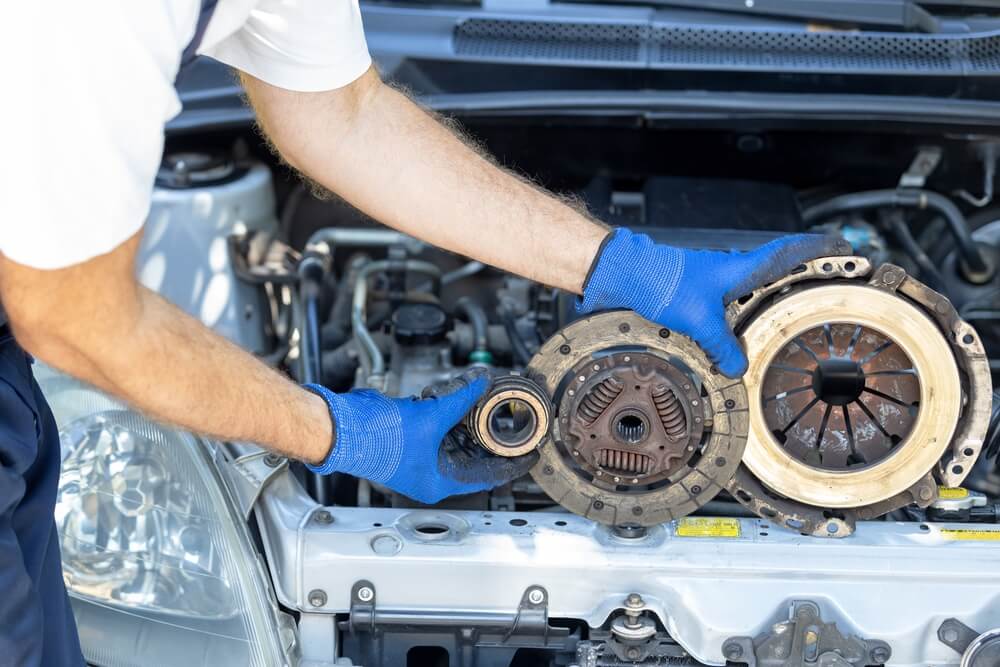

A vehicle’s transmission transfers power from the engine to the wheels, changing your speed. It shifts gears to control how much power goes to the wheels, either automatically or manually, depending on the type. Without it, your car can't move properly.
If you suspect your transmission might be failing, you may want to go through the common signs of a bad transmission to see if any describe your situation and take action before it leads to major damage.
Common Signs of Transmission Failure
1. Unusual Noises When Shifting Gears
One of the first signs of a faulty transmission is hearing unusual noises when changing gears. These noises may start subtle but will typically worsen over time. If you notice grinding, whining, or clunking sounds, especially during gear shifts, this could indicate worn or damaged internal components.
2. Gear Slipping
If your car unexpectedly shifts gears on its own while driving, this is a serious sign of a malfunctioning transmission. Gear slipping occurs when the transmission struggles to stay engaged, pointing to issues like worn-out clutches or a faulty transmission control module. This not only affects the performance of your vehicle but also poses significant safety risks, as it reduces your control over the car.
3. Difficulty Shifting Gears
A bad transmission can cause difficulty or delays when you try to engage gears, like when shifting from park to drive or during normal driving. You might experience a pause before the vehicle responds or feel a harsh jolt when the gear finally engages. This can result from low transmission fluid, worn-out parts, or internal mechanical failure. These delays and rough shifts will worsen over time, eventually leading to a complete breakdown if left unchecked.
4. Transmission Fluid Leaks
Transmission fluid is essential for keeping the transmission lubricated and preventing overheating. If you notice red, sweet-smelling fluid pooling underneath your car, it’s likely a transmission fluid leak. Leaks can occur due to worn-out seals, cracks in the transmission pan, or damaged fluid lines. Low fluid levels can cause the transmission to overheat and suffer internal damage, so addressing leaks quickly is critical to avoid more severe problems down the road.
5. Burning Smell
A burning smell while driving is never a good sign, especially if it’s coming from your transmission. This can indicate that your transmission is overheating or that the fluid is burning due to friction or insufficient lubrication. Burnt transmission fluid loses its ability to cool and lubricate the system properly, leading to permanent damage if ignored. If you detect a burning odor, it’s time to get your vehicle inspected by a professional.
6. Dashboard Warning Lights for Transmission or Engine
Modern vehicles are equipped with sensors that monitor various systems, including the transmission. If your "Check Engine" light or a dedicated transmission warning light comes on, it’s a clear sign that something isn’t right. Don’t ignore these alerts, as they can indicate a range of issues, from minor sensor malfunctions to major mechanical problems.
How to Fix a Broken Transmission
Fixing a broken or malfunctioning transmission often starts with checking the transmission fluid, as low or dirty fluid is a common cause of issues. If leaks are present, repairing seals or gaskets may be necessary to prevent further damage. Sometimes, worn components such as clutches need to be repaired or replaced to restore proper function. In more severe cases, the transmission may need to be fully replaced, especially if internal damage is extensive. Either way, it's always best to consult a professional mechanic to accurately diagnose and fix the problem.